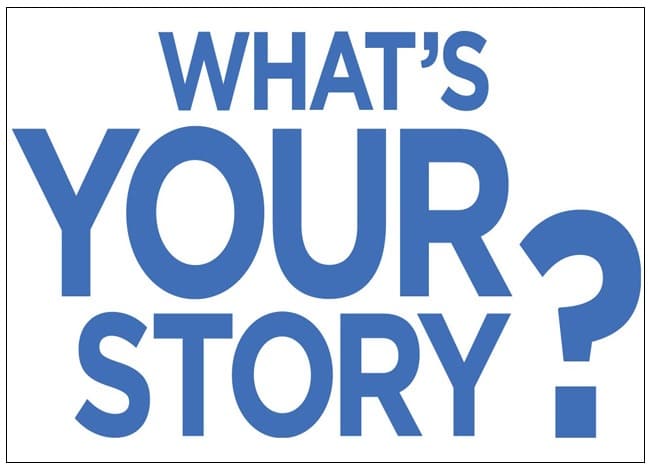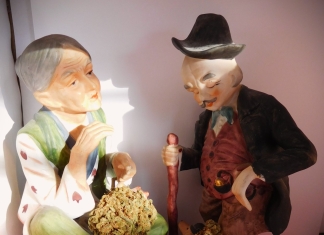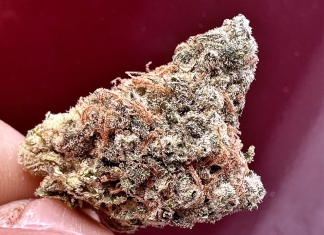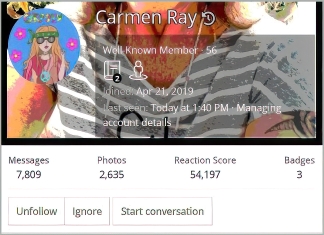The rapid growth of the cannabis market has made it an incredibly competitive environment, and it’s tough work to stand out.
If you want your cannabis brand to build a name for itself, you can’t just put out a few ads and hope that that will be enough to draw customers in to try your products. Consumers today have seen it all, and they’re jaded about traditional advertising. If you want your cannabis company to build a loyal following, you need to find ways to build that emotional connection with customers. One of the best ways to do that is through storytelling.
According to research by the Tempkin Group, when individuals have a positive emotional association with a specific brand, they are 8.4 times more likely to trust the company, and 7.1 times more likely to purchase more. Storytelling works because it engages the emotional section of the brain.
Since the dawn of humanity, we have used stories to entertain, to pass on valuable information, and most importantly to build relationships and better understand each other. Neuroimaging studies have shown that consumers base their evaluation of a brand much more on emotions and personal experiences than they do on numbers or other hard facts about the brand. Advertising research has also shown that when people look at an advertisement, they’re three times as likely to choose to buy something based on how the ad makes them feel than what the ad actually says.
Those are some of the reasons why you really want to use storytelling to get your cannabis brand’s message out there. A powerful brand story is a chance to expand your brand’s reach and boost sales.
Use A Simple Story Structure
Powerful stories generally all have the same basic ingredients: you have a central character that encounters a problem, and then the character goes through a process to solve that problem.
Central Character + Problem + Solution = Story Structure
This simple structure can be used in infinite ways to tell powerful stories with tension, which pull in your audience and attract a wide variety of customer bases. You’ll use that basic structure for your brand’s origin story, for the stories of your products, and for the stories of your customers who have solved their own problems with your products.
Here’s an example: StickerYou’s own origin story started with a trip the founder, Andrew Witkin, took to Los Angeles. Andrew (the central character) was blown away by the inventive, beautiful sticker art he saw plastered on walls and other surfaces all over the city. He researched custom stickers and custom labels and found that at the time they were prohibitively expensive in small batches — too expensive for most people to afford to use them for business or personal expression (the problem). He set out to change that, and he created StickerYou (the solution).
This same simple formula lies at the heart of every brand story.
Build Your Origin Story
Telling your company’s origin story is a key part of getting customers to connect with you and your mission. Your origin story does not have to be complex, but it should encapsulate elements of your core brand values. Brainstorm ideas of who the protagonist (main character) will be. Usually it’s the founder of the company, but it could also be someone who served as an inspiration for the creation of the company.
Think about the values that are central to your company and how they play out in all your brand does. How will your origin story set out to show those? How does the problem your cannabis company set out to solve, and the solution you found for it, reflect those key values?
Canadian cannabis brand Burb distilled their origin story into one sentence: We’re simply a group of friends, passionate about cannabis, and trying to raise the bar on how this industry is perceived and retailed.
From this, the consumer understands that the brand is based on friendship, and because of this values relationships and trust, and also values advocacy and understanding of the product and industry.
Stories Are Everywhere
Now that you’ve got your origin story down, think about the endless other brand stories you might tell. This is a space in which companies can get creative. While some brand stories will be directly about the product, others may only be tangentially related.
A great example of this is YETI Coolers’ hugely popular “Hungry Life” campaign. It’s a video series that follows Chef Eduardo Garcia on cooking adventures in beautiful places around the world — Hawaii, Mexico, Montana, just to name a few. Each video is its own story of Chef Eduardo putting together delicious, Instagram-worthy meals in less than ideal circumstances – always with the help of YETI gear.
The need to overcome challenges in order to cook these meals presents the problem and the solution, there’s a great central character that audiences connect with, and the beautiful landscapes and tasty food aren’t just visually appealing, they also heighten the emotion and aspirational feel of the videos, which consumers then also associate with YETI.
Keep those ideas in mind when creating stories for your cannabis brand. Start with the central character. Who are they, and what are they like? What does this person want? What’s the problem that they need to solve? They might be a real life person who uses your cannabis product or service to solve a problem in their life, big or small. Or, it could be a character doing something that doesn’t directly involve your product, but that aligns with your product’s mission and values.
For example, Dove’s long-running Real Beauty campaign interviews real women about their own self esteem issues and the psychological impact of being expected to look like airbrushed models, often comparing Photoshopped magazine images to photos of regular people. It doesn’t have anything to do with soap or lotion, but “real beauty” still aligns with the idea of skincare products, and it creates a lot of positive feelings about the brand’s values.
Make Them Care
Throughout your process, keep asking yourself one simple question: Why should I care? This is the key to keeping consumers interested in your brand stories. Remember, your story should have a character who wants something, big or small, and it should be something your audience can connect with. If you’ve got that, you have a story that will resonate with audiences, and a winning formula for other stories to come.
Author Bio: Andrew Witkin, Founder & President
As the founder of StickerYou, Andrew believes in the enormous power of customization. With over a decade of StickerYou success, he is one of Canada’s leading experts in e-commerce, customization, startups, marketing and the tech economy.
He is a graduate of Dalhousie University and holds an MBA from the Schulich School of Business, York University. Witkin has previously served as VP North American Licensing for Nelvana/Corus Entertainment and Director of Marketing for MegaBrands/Mattel.














